It’s been around three weeks since a spate of run-ins with motorised morons caused me to take a break from cycle-commuting for the sake of my physical safety and mental health in equal measure. Since then I’ve been sampling the delights of commuting by public transport and life as a pedestrian, but of course there’s always been that niggling voice of whether they’ve actually defeated me, whether I’ve been driven off the road for good? Well, surely that can’t be. I had to get back on the horse at some point, and that point was today.
With the Manchester-Blackpool night ride approaching at the weekend, which I would usually prepare for simply by commuting 10 miles a day and the odd weekend ride, and my finances feeling the strain of spending the equivalent of a pint of decent craft ale (#notahipster) a day on bus fares, I slung my leg over my faithful old commuter Stan and off we went.
Still edgy about cycling on busy roads in traffic (how does one go about regaining one’s fearlessness about that?), I decided to take the advice that various people gave me on the “On whether cycling is worth it at all” post, and opted for the most traffic-free route I know. Normally I wouldn’t go this way in the morning as it’s longer and more disjointed than the direct route, but now accustomed to travelling for the best part of an hour either way by bus, it seemed like the best option for now.
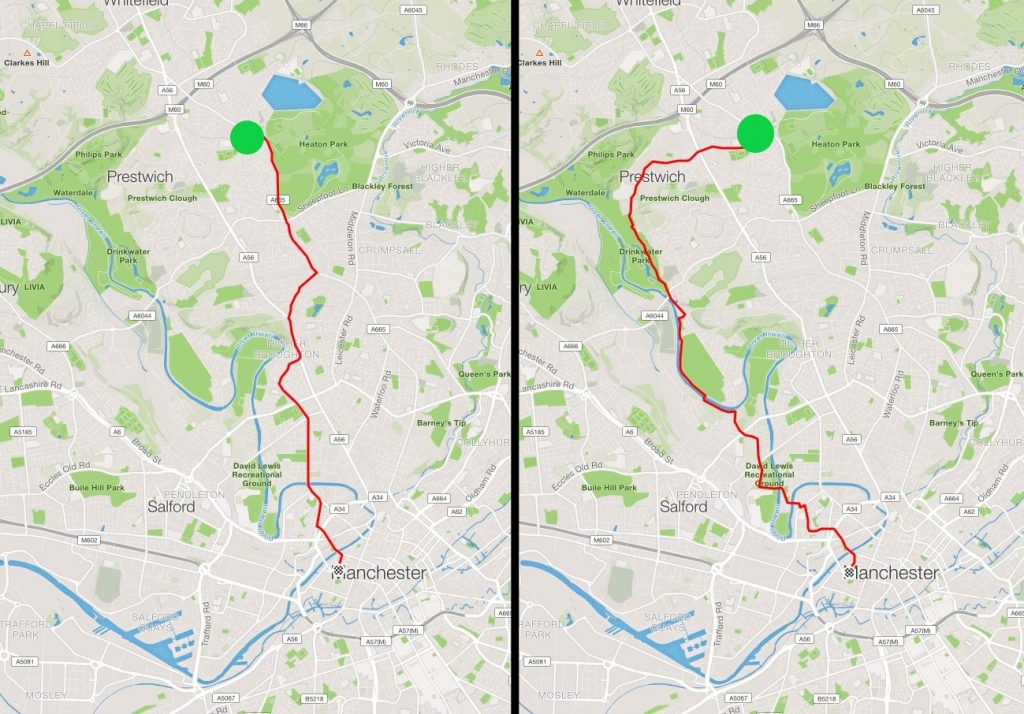
Left: my usual route to work: 4.7 miles and takes around 25 minutes. Right: traffic-free route: 6.2 miles, takes at least 40 minutes.
Now, we’ve all heard the following tiresome canard, haven’t we: “Bloody cyclists, get millions spent on bike lanes and don’t use the sodding things”. As if we all have an immaculately surfaced Dutch-style cycle path outside our front doors and then cycle in traffic to piss drivers off for sport. Of course, the reality is much different. I live around a mile from Route 6 of the National Cycle Network (NCN), which has some, albeit limited, utility as a commuter route. This is what it looks like on a soggy October morning.
First, to get to Route 6, I have to travel through permanently car-clogged Prestwich. Fairfax Road in particular is a locus of permanent gridlock. The only time I’ve seen it clear was during recent resurfacing works, when I dodged the coned cordon to enjoy probably the only chance I’ll ever get to ride the road in a simultaneously smoothly tarmacked and carless condition.
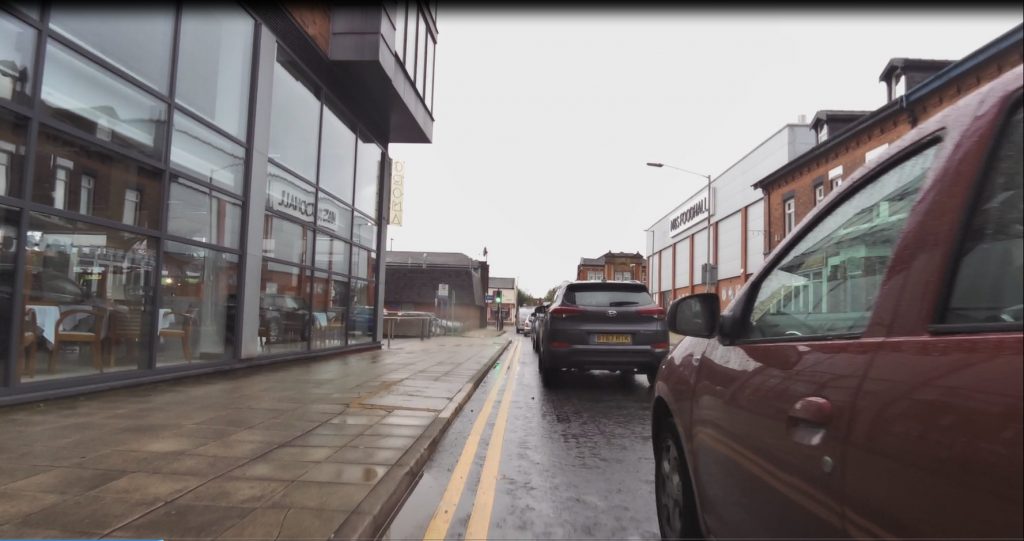
Fairfax Road. Never knowingly traffic-free.
Then I take the quiet roads beyond Bury New Road down to the site of the old tip. Of course, quiet doesn’t mean deserted, or indeed safe:
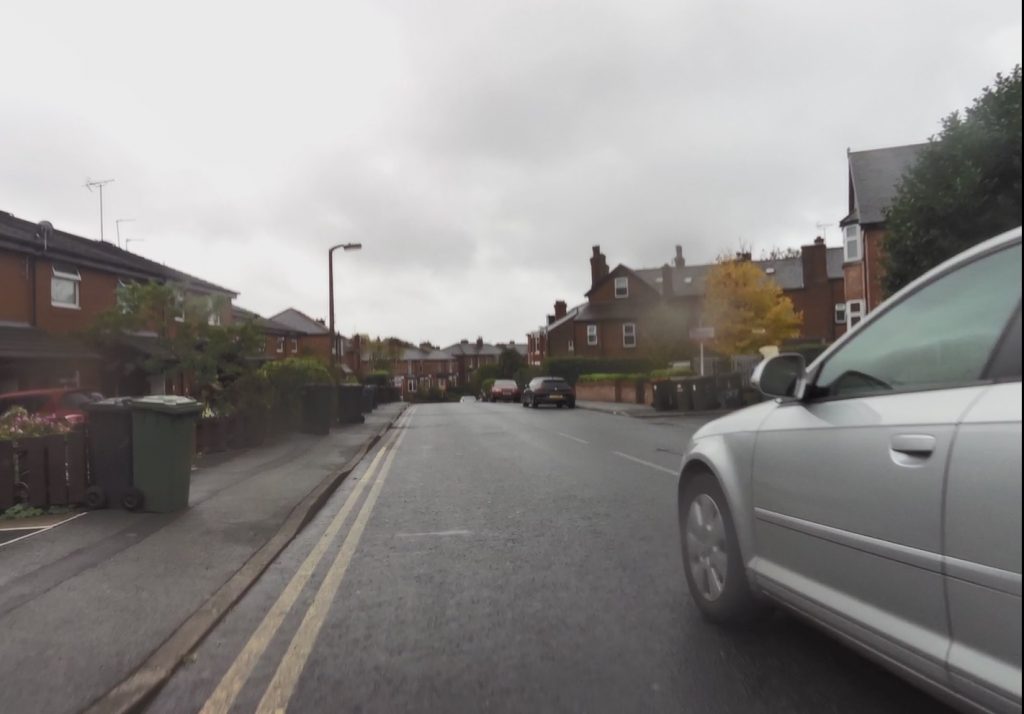
A customarily intimate encounter with an Audi driver on a quiet residential road.
From here I can access a short, traffic-free, gravel-surfaced, unlit section of Route 6, which, as we’ve discussed elsewhere, is fine as a leisure route on fine summer days, but is less suited to year-round commuting (and before you write in, yes I know some of you do commute on it in all conditions. Point is: most don’t, or wouldn’t).
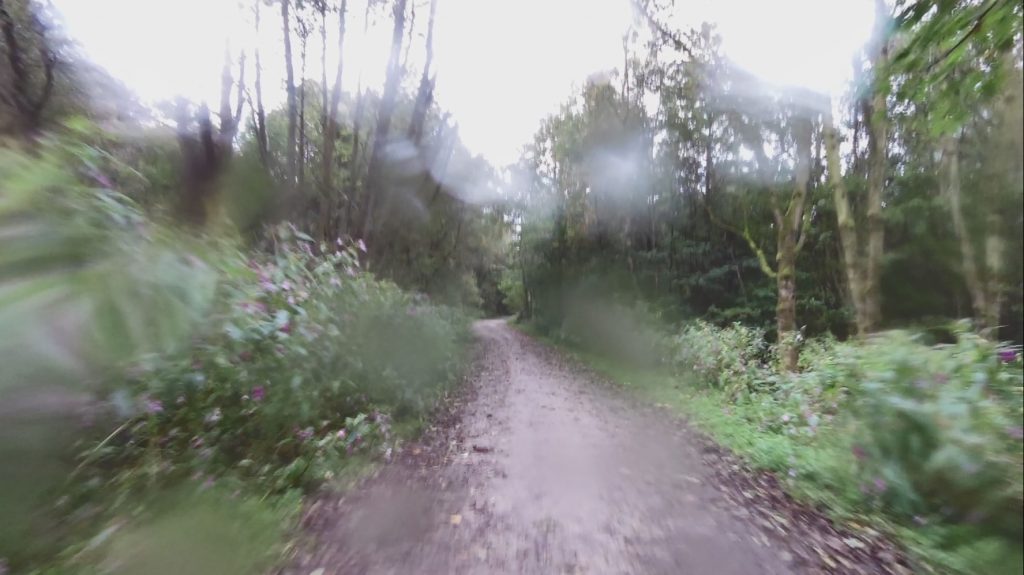
NCN Route 6 at Drinkwater Park. Well-liked by mountain bikers, for obvious reasons.
The NCN is infamous for its barriers to cycling, which exist ostensibly to keep off-road motorcyles at bay, but often both fail in that aim and also make life harder for anyone cycling the route. This stretch is no different.

An A-frame barrier on NCN route 6 at the end of the Drinkwater Park section. So narrow I struggle to get my bike with slightly flared dropped road handlebars through. Impassable to many types of cycle.
Having navigated the barrier, you then find yourself spat on to a busy roundabout on the road between Prestwich and Pendlebury.
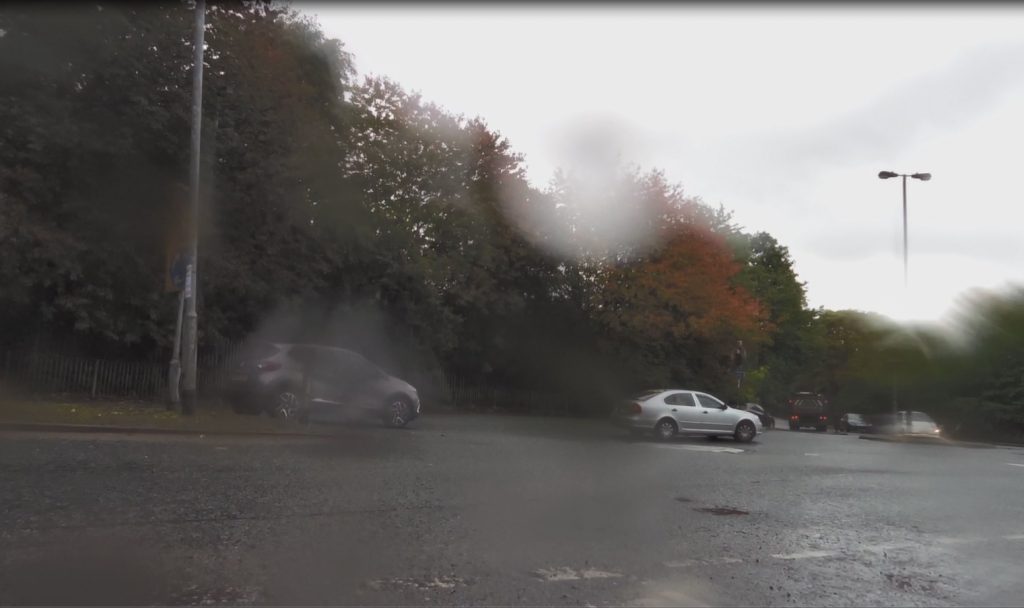
Roundabout at the bottom of Rainsough Brow leading on to a short, fast section of Littleton Rd.
The option here is to battle the traffic along Littleton Road with its myriad speed humps, build-outs and parking bays, or brave the even more roughly surfaced path along the banks of the Irwell. Today muddy tyres trumped bad drivers, so I traversed yet another (rather ornate) barrier and slowly made my way along what is little more than a sheep track.
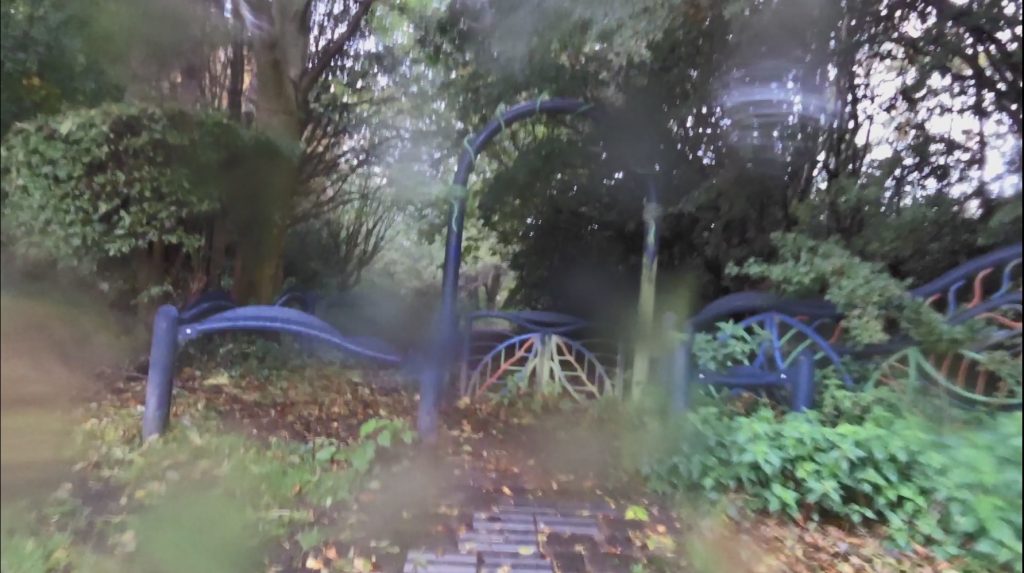
Lovely iron work, for sure, but a barrier to cycling nonetheless.

This won’t be getting a Beelines quality seal any time soon.
At the other end of this section of the Irwell we cross the river via a bridge with not one, but two, barriers on it, with yet a further barrier not long after. We are then ejected into the traffic at this end of Littleton Road.

Bridge across the Irwell. Barrier at either end.

Further barrier within a few yards of the barrier at the end of the bridge…
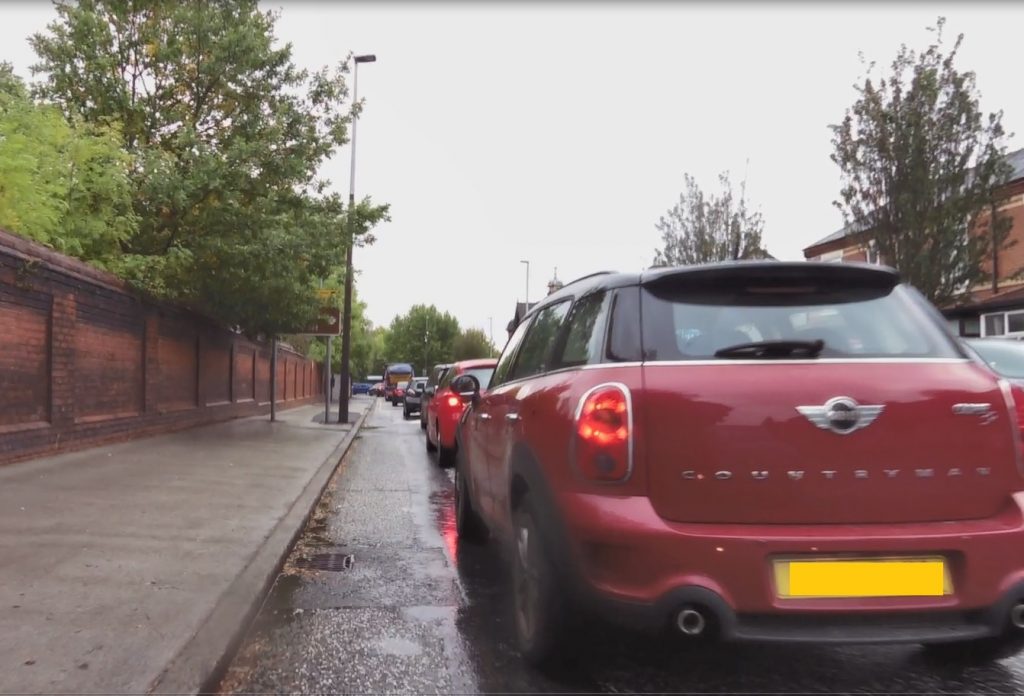
…only then to have to navigate queuing traffic on the approach to the Cromwell Road roundabout.
The roundabout with Cromwell Road is simply horrid. It’s busy, there is no specific provision for bikes and I’ve had multiple run-ins with shoddy drivers here. It’s the bit of this route I like the least, and the one I don’t know any way of avoiding.
Anyhow, from here there’s a short on-road stretch through to the David Lewis Recreational Ground, across which we can take a traffic-free long-cut.
From there we just need to cross a couple of bridges with identical barriers, wend our way through some quiet streets of Salford, cross the ring road, pedal past the King’s Arms and Salford Central and I’m just about there.
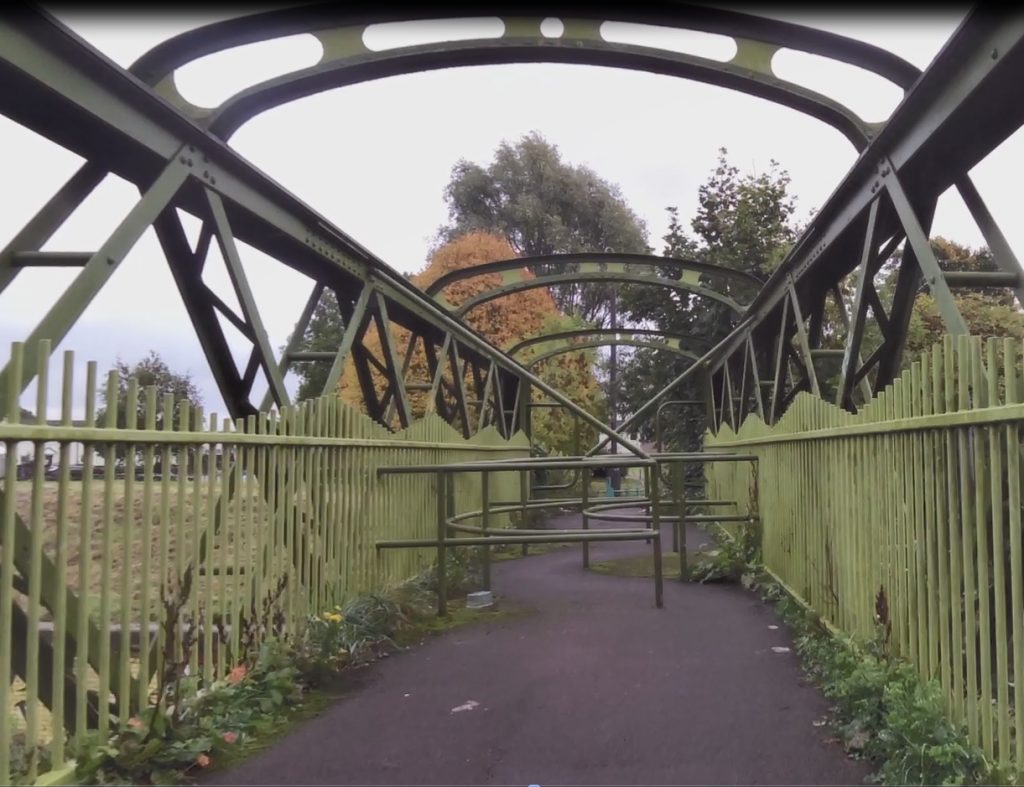
I have navigated this bridge on a tricycle in the past. It was a fun challenge.
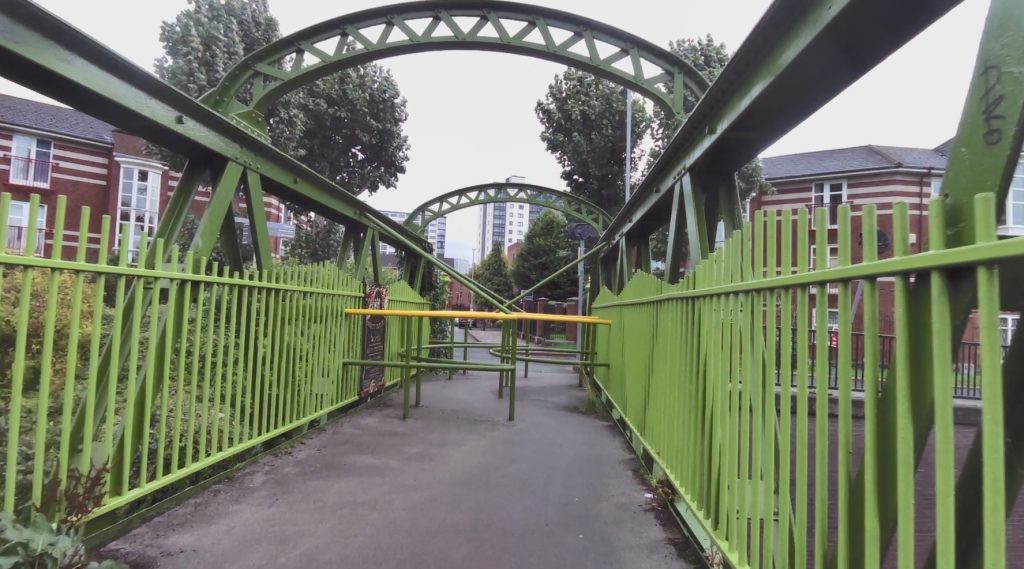
There’s a beauty in symmetry, they say. Identical barriers on identical bridges.
So there we have it. That’s the quiet route to work. At least seven barriers, rough and muddy surfaces, circuitous, and still with some busy, dangerous on-road sections. All this backs up the assertion that there are no good ways of travelling around Greater Manchester, and certainly no good ways of travelling around by bike. You’re either at the mercy of the Manchester motorist, or you can engage in some light cyclocross on the way to the office.
We can do better than this, can’t we?

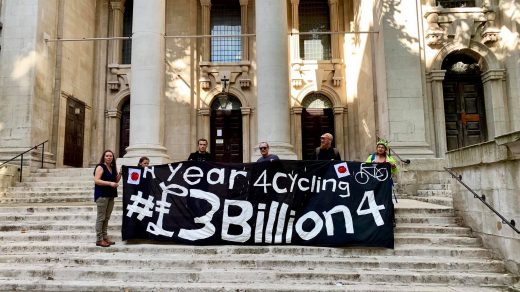



I oft’ take a very similar route, for exactly the same reasons. It’s certainly slower than the road, but it can ease me back into things and doesn’t take any longer than the tram from where I am in Besses. That barrier was damaged with the United Utilities works further up the bank—my handlebars used to fit through fine, until one somewhat painful morning they didn’t.
I don’t bother with Littleton Road, there’s a marginal trail on the far bank that starts on the bridge by the Agecroft Road roundabout. It’s narrower than the other side, but do-able. You can also avoid the southern end of Littleton Road/Cromwell Road by going straight across and taking a long-cut through the new Castle Irwell, or along Suffolk St / London St once they finish the housing estate in your photo. Finally going via. Peel Park to the University and then along the Cresent gets me in.
What’s so frustrating how close this is to being a pleasant at least summer-time route from Prestwich/Whitefield into the centre. But Agecroft road already has a potential crossing marked, if the bank past Agecroft could be surfaced, then the rest is removing barriers, and marking it (NCN6 doesn’t seem to be keeping up with the times). And Beelines does sound like the right scheme to possibly make this happen.
Beelines and NCN routes are two different things. Beelines is using the existing road network and making it more attractive for active travel, and NCN is more about leisure riding. I absolutely agree that sorting out the far bank of the Irwell would make a lot of sense (I have tried it on a hybrid and it’s not that great in its current state). But is it strictly a commuter route suitable for a twelve-year-old? I know Salford are looking at upgrading bits of their part of this route if they can find the funding. But the bottom line of Beelines is that we shouldn’t be scratching our heads looking to find the safest route into town: it should be perfectly possible to take the most direct route by bike. Dutch-style lanes on Bury New Road are still on the table. Now wouldn’t that be a thing?
Have you considered a quieter roads route? Maybe not car-free, but fewer and hopefully they’ll be going a bit slower. From your map and not knowing the area, I’d look at going into Heaton Park (seems a good way to start a day), then out via Park Road, Singleton Road, Park Lane, a short cycle-laned bit of Bury New Road, then Cliff Crescent, Lower Broughton Road and across to NCN 6 for the last bit, or to the cycle lanes of Blackfriars Rd/St if you can’t be doing with those bridge barriers.
Oh and please report those bridge barriers as blocking disabled tricyclists on http://www.fixmystreet.com. Then the cow ‘n’ swill officials can’t say they weren’t warned if they get slapped by someone for discrimination.
Believe me, I’ve tried every possible combination. A real problem I find on low-traffic roads is that rat-running drivers will get very angry that their cunning plan to avoid traffic and save a little time is foiled by a bloke on a bike trying to maximise his safety. Same old story: motorist convenience trumps all. Some of the incidents that caused me to take a break happened on such roads. There really is no idiot-proof option.
Good point about the barriers. I’ll look into making those complaints.
I live close to the Cromwell Road roundabout and personally haven’t had problems with it, but I can see how it could be a nightmare with the wrong drivers. If you want to avoid it you now can do so by utilising the new wetlands area which used to be Manchester Racecourse – you can access it from Littleton Road (near the allotments) and exit onto Cromwell Road by the bridge. There’s a path along the river to the footbridge from Gerald Road and back onto route 6.
Thanks, I’ll have a look out for that.